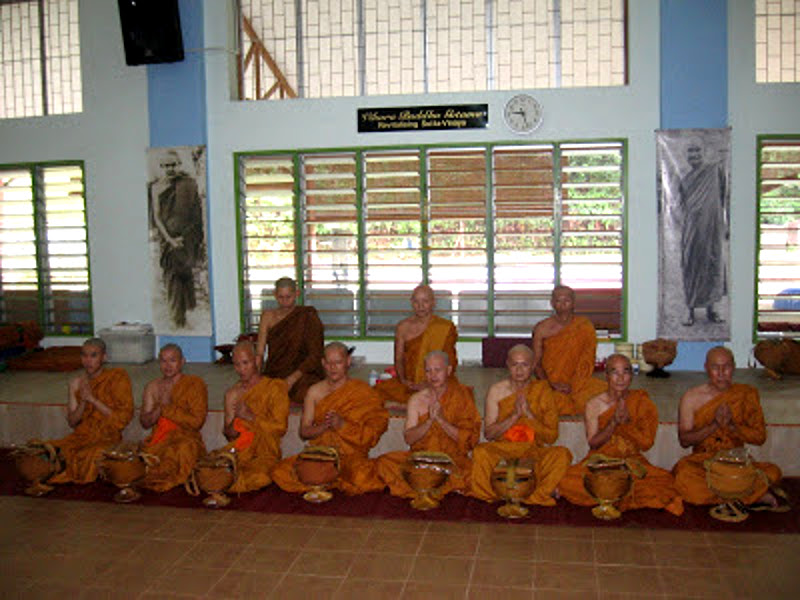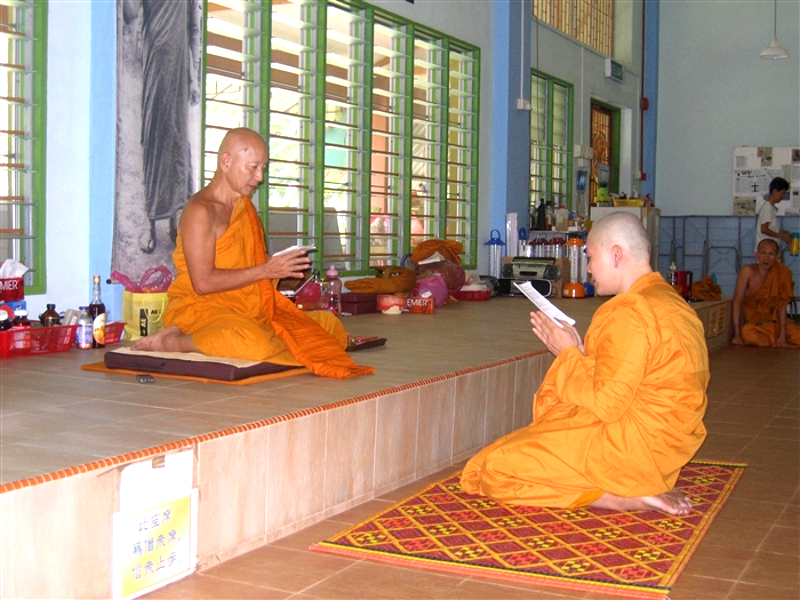Legacies of The Buddha
Gotama Buddha did an extraordinary job. He revealed the solution to permanently overcome stress and suffering.
We’re still benefiting from the legacies of his enlightenment till today, in a world that has made tremendous advancements in science and technology.
We’re forever indebted to the Buddha.
The Buddha’s effort in establishing the Sangha and his untiring dedication in teaching the Dhamma-Vinaya was amazing. Even after more than 2,500 years after his passing away, the door to the Deathless is still wide open to the earnest seekers who dwell rightly and walk the Noble Eightfold Path.
Our Legacies
On the same count, it’s useful for us to reflect on our lives — what are the things we’ve done for ourselves and others? Are they beneficial?
Have we left footprints of skillful actions that resulted in happiness, or careless actions that led to painful results?
Putting aside the past, what can we do now to live a skillful life that will result in happiness here and now, and hereafter?
Legacies of Luangpor Dhammavuddho
In 2014, I asked a similar reflective question to Luangpor Dhammavuddho on the key things he had done as a monk. It was about his spiritual practice and how it had benefited others through the teachings of the Dhamma, as well as the founding of Vihara Buddha Gotama.
Here is the short interview:
Credit must be given to Luangpor’s constant reminder and encouragement to rigorously investigate the Buddha’s words found in the earliest Suttas.
These Suttas are liberating discourses that no spiritual seekers should miss. They’re the supreme teachings of the Buddha that lead to liberation. Understanding these Suttas and putting them into practice is the “shortest cut” to enlightenment.
Let’s keep in mind the Buddha’s advice in the Maha-parinibbana Sutta: “Then the Blessed One said to Venerable Ananda, “Now, if it occurs to any of you — ‘The teaching has lost its authority; we are without a Teacher’ — do not view it in that way. Whatever Dhamma and Vinaya I have pointed out and formulated for you, that will be your Teacher when I am gone.””
The Buddha’s teachings and the Path he pointed out to liberation are very specific. We need to know the specifics in order to be able to put the right things into practice. Not knowing the details and blindly following our teachers can be a dangerous recipe. In fact, it can sometimes be disastrous.
What is recommended can be found in the Anguttara Nikaya Sutta 4.180 where the Buddha taught the four great authorities. If a monk might say he heard and received the teachings face to face from the Buddha, or from the Order of monks with an elder-leader monk, or from a great number of elder monks (or a single elder monk) who are widely learned that “This is Dhamma, this is Vinaya, this is the Master’s teaching,” those words should neither be welcomed nor scorned. “If, when thus laid beside Sutta and compared with Vinaya, they lie not along with Sutta and agree not with Vinaya, to this conclusion must you come: Surely this is not the word of the Exalted One, Arahant, the Fully Enlightened One, and it was wrongly taken by that monk. So reject it, monks.”
So the Buddha recommended to us to use the Sutta-Vinaya as the ultimate yardstick. It’s noteworthy to see here that the Buddha gave us the courage to reject teachings (no matter who it comes from) that are not in line with the Sutta-Vinaya. This is for our welfare and happiness.
In fact, the Buddha rejected many teachings during his time. To put it bluntly, he didn’t see the beauty in all teachings. He was neither interested in approvals from the masses nor was he interested in fame and power. The Buddha didn’t mince his words. When the circumstances demanded, he directly called a fool a fool. If you think about it, this is real compassion.
For more details on this important topic, Luangpor had written a book, i.e. Liberation: Relevance of Sutta-Vinaya.
Also, Luangpor had given many Sutta talks. Many people found them to be extremely helpful and inspiring.
These talks are now all available in a little micro SD Card. When you’re at Vihara Buddha Gotama, do check it out. These Sutta talks can also be found in the monastery’s website.
The Dhamma is not simplistic teachings of a moral class. It goes far beyond that, into the realm of overcoming stress, pain and suffering, birth and death.
I urge anyone who is interested the Buddhist’s Path to investigate the words of the Buddha, and start reading, listening and discussing these Suttas. The more you do that, the clearer the Dhamma becomes.
As the Dhamma becomes clear, your confidence in the teachings of the Buddha will grow stronger and stronger.
And when you put into practice the supreme teachings of the Buddha, it leads you directly towards the goal of the holy life, Nibbana.
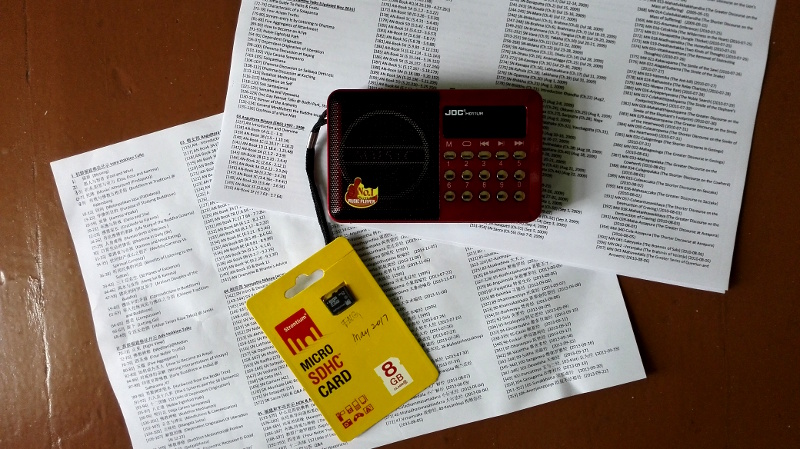 Many people have benefited from the hundreds of hours of Dhamma/Suttas talks of Luangpor Dhammavuddho. With a little micro SD Card and a simple player, you can now listen to the Dhamma easily and at your convenience
Many people have benefited from the hundreds of hours of Dhamma/Suttas talks of Luangpor Dhammavuddho. With a little micro SD Card and a simple player, you can now listen to the Dhamma easily and at your convenience
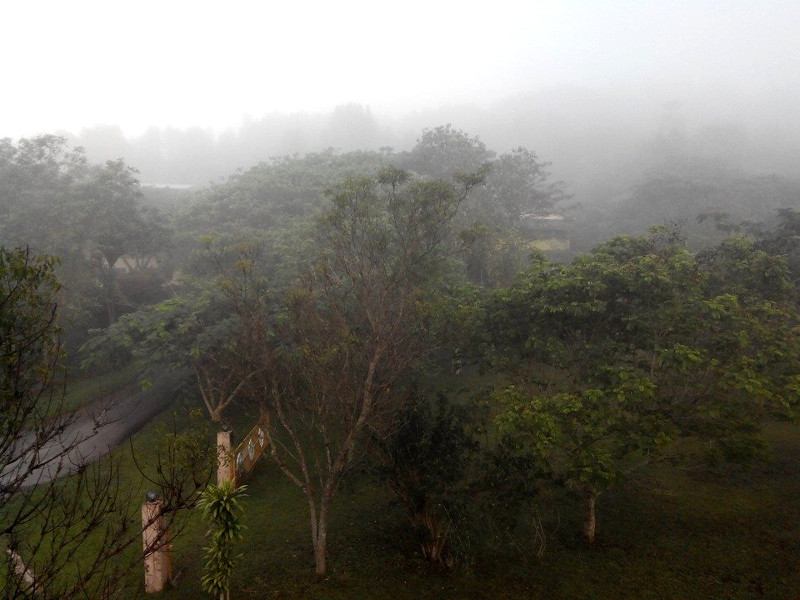
Vihara Buddha Gotama covered with mist in the morning, 1st Feb 2015
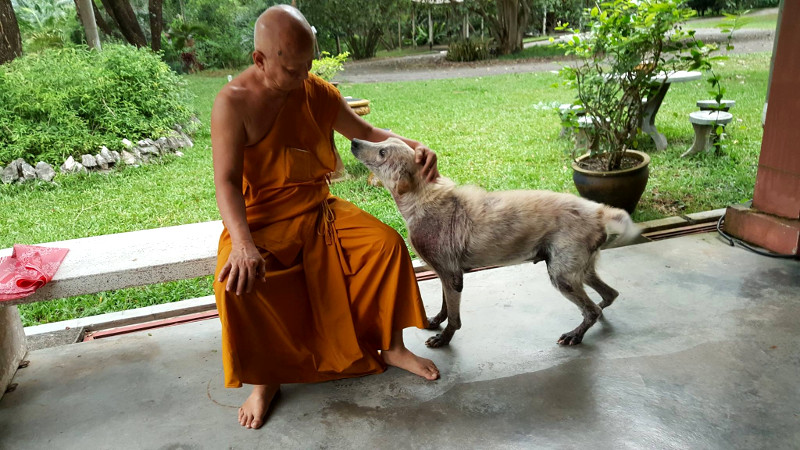
An old monk, Luangpor Dhammavuddho, with the old dog. Here is the look of love and compassion for a dog with skin disease that nobody likes to touch and it was shunned by other dogs. A moving picture of gentleness of Luangpor Dhammavuddho and the look of love in the dog’s eyes. The picture speaks a thousand words
